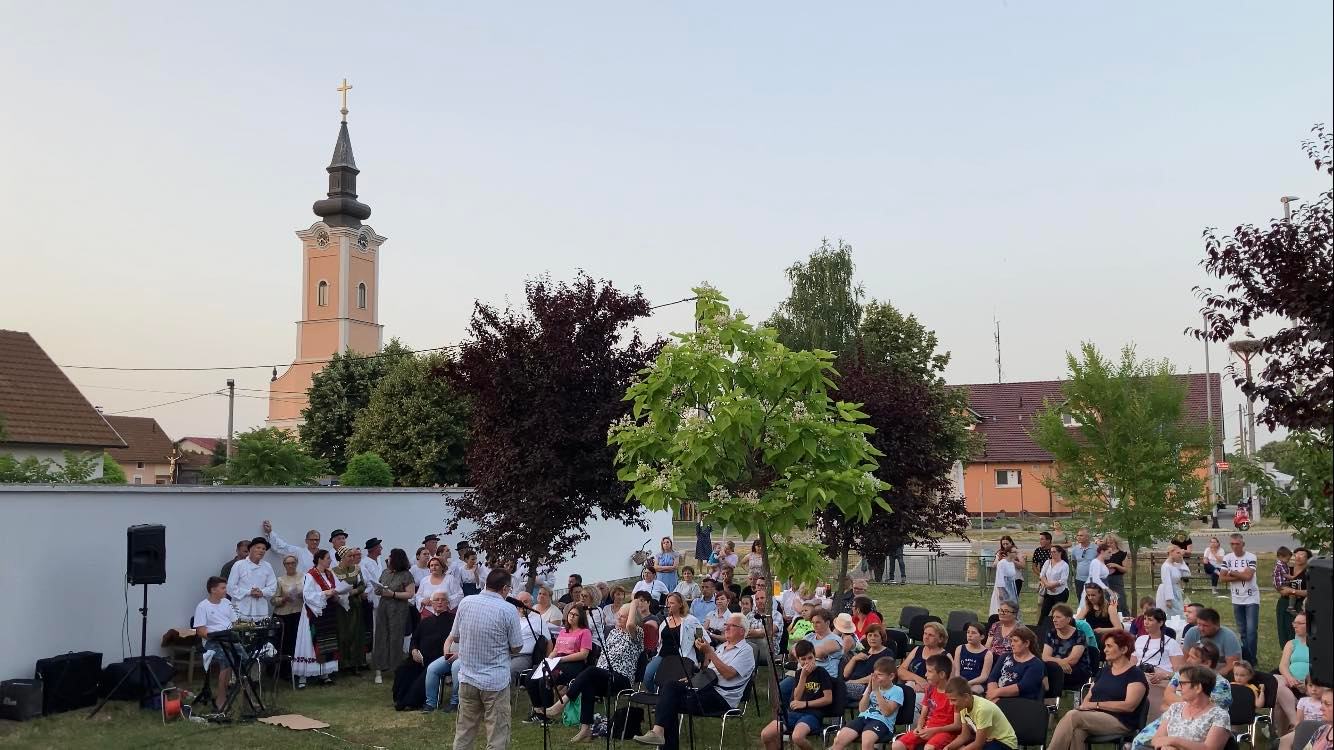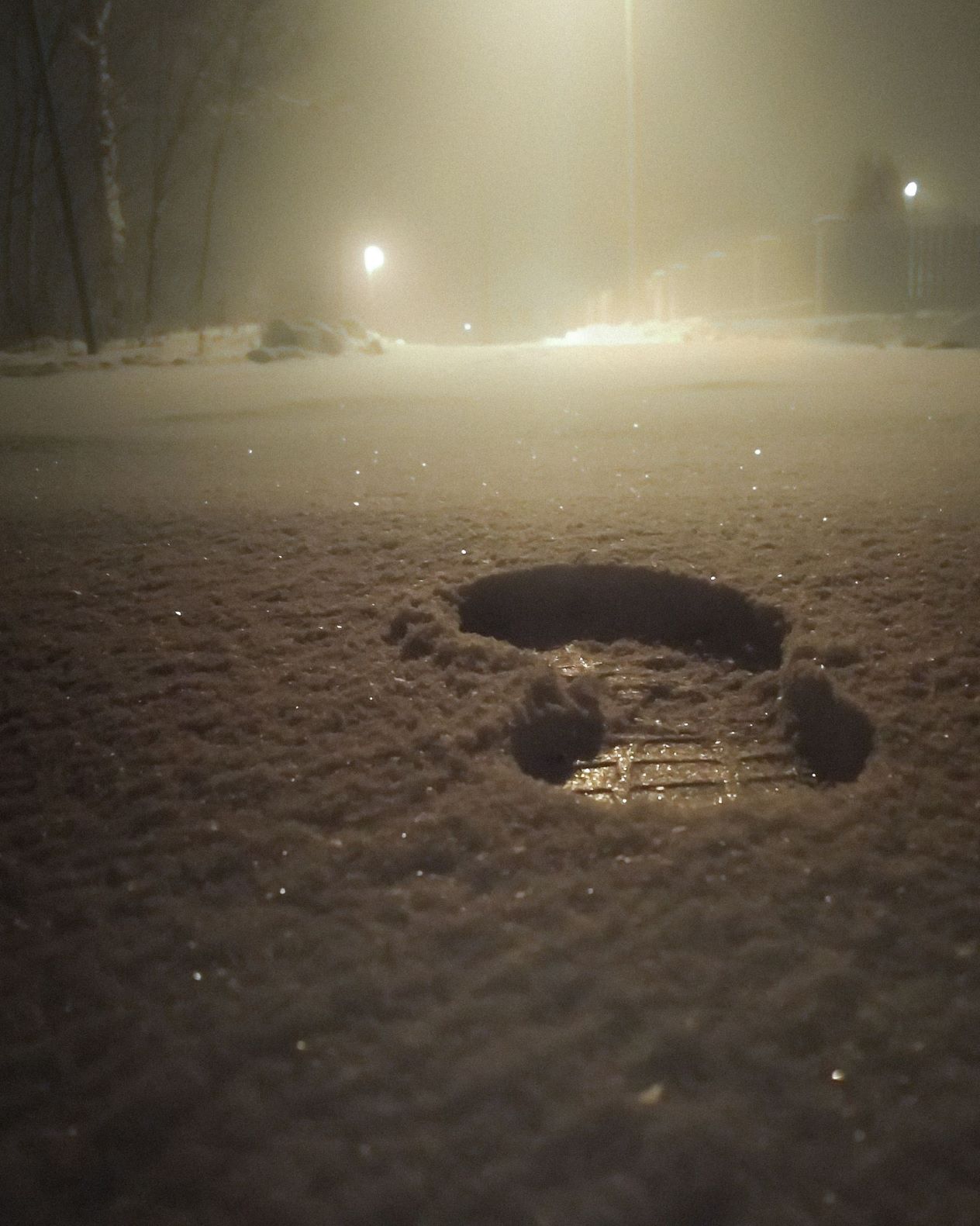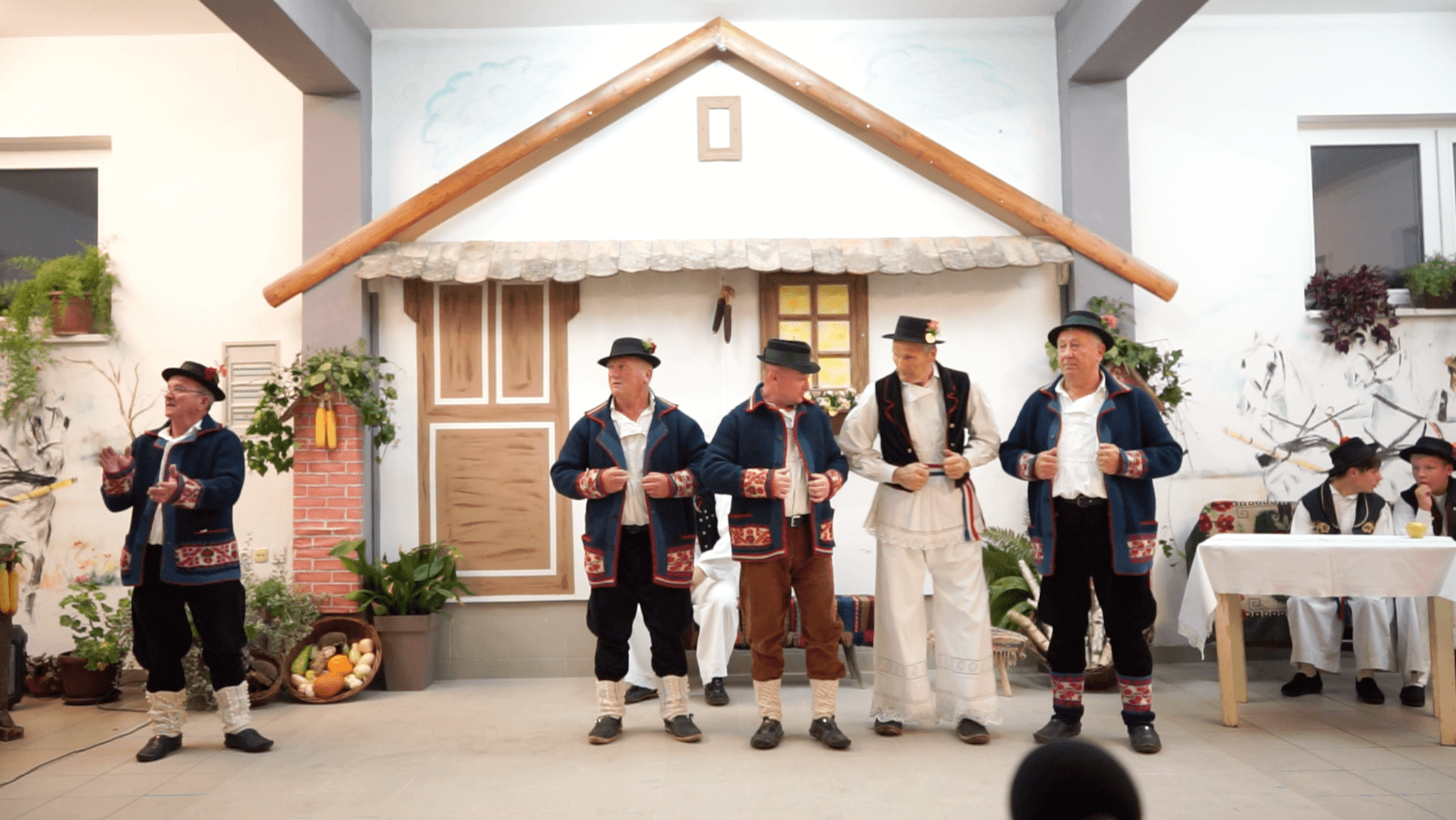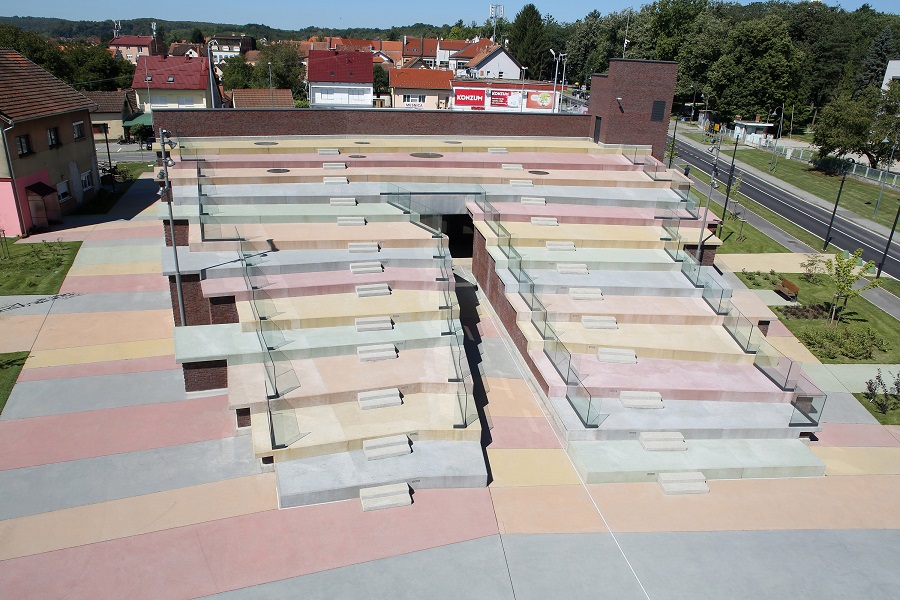Two Thousand People Participate in Đakovo Folklore Festival Procession
ZAGREB, 3 July 2022 - The main event of the 56th Đakovački Vezovi traditional folklore festival took place in the eastern city of Đakovo on Sunday as 2,000 participants, including 43 folklore groups from Croatia and abroad, walked down the city centre.
Ukraine is the partner country of this year's festival, which also showed the folklore of Bulgaria and Slovenia. Also present were Croatian folklore societies from Kansas City, Bački Monoštor in Serbia and Tomislavgrad in Bosnia and Herzegovina.
Among those watching the 90-minute procession were Bulgarian Ambassador Genka Georieva and the Croatian parliament speaker's envoy, MP Goran Ivanović.
After the procession, Archbishop Hranić celebrated Mass at St. Peter's Cathedral.
The festival ends tonight with the election of the most beautiful folk costumes.
For more, check out our lifestyle section.
Poetry As Preservation of Slavonian Cultural Heritage and Tradition
31st of March 2022 - Meet Željko Čuljak, whose poetry and stories about the beauty of Slavonia and its residents aim to preserve the cultural heritage and tradition of his village Cerić and the whole Slavonian region.
We spoke with Željko in his home in the small village of Cerić, which is located near Vinkovci and has suffered a tragic fate. During the Homeland War, Cerić fell and was destroyed to the ground - residents lost everything and inevitably fled the enemy aggression which destroyed everything in their way. Željko, with his fellow fighters and villagers, stayed behind and helped to protect Nuštar, a nearby village that resisted tireless enemy attacks and led bloody battles that lasted for days. On the 5th of October in 1991, just a few days after surrounding villages fell to the enemy hands (Cerić and Marinci), Croatian defenders resisted enemy attacks and, in the end, managed to protect the village from aggressors. This event is forever inscribed in the history books of the Homeland War as the “Battle of Nuštar”, which was one of the biggest wins of the Croatian army in an effort to protect the country of Croatia from aggressors. Why is this event mentioned? Because its consequences left a big scar on Cerić and its surroundings - destroyed homes, displacement of the residents, destroyed the most recognizable symbol of the village, the church and so much more. The identity of the village was shattered by those buildings and still has an impact on the village's atmosphere today. However, returnees to the village and new residents made it their mission to bring back the old glory of Cerić, promote how people lived before the war, and show that their tradition, cultural heritage, and their lives were not erased on that fateful day in 1991.
Thus, join us in meeting Željko, who is at forefront of the mini “Slavonian revolution” which is propelled by his stories and poetry about the past and present and the future of Slavonia as well.
Željko, can you tell TCN readers a bit about yourself?
My name is Željko Čuljak, a folk poet and a writer, a defender of the Homeland War and a retiree, who in their free time raises pigeons and writes stories about Cerić and Slavonia. I am a father of three children, a grandfather, and a husband. My writing is connected to the exile of our village, ten years of watching my village from the frontlines. To understand my writing and me in general, you need to see where I live.
What is Cerić? If you look at it as an outsider it seems like any ordinary Slavonian small village, so what is so special about it to you?
We live in Slavonia, a rich and “full” region that through time attracted a lot of conquerors and consequently, misfortunes. People who lived here suffered a lot during a few wars that happened in this region and after those casualties, the number of residents rapidly decreased which led to people all over the country migrating to Cerić. In the beginning, a lot of conflicts occurred between immigrants and the old residents, who felt threatened by the newcomers. However, after some time, harmony and love prevailed and connected these different groups. Love won in the end and those newcomers accepted the village's customs and cultural heritage and traditions of this region. In conclusion, calm people live here.
"Evenings with Poetry" in Cerić, (photo credit: Vedran Čuljak)
When did you discover your passion for writing?
I don’t talk much, a lot of the things I prefer keeping to myself and we were taught “if you don’t have anything nice to say, it’s better for you to be quiet.” I endured the war better while I was in it than when I came back to destroyed homes and a neglected village, it fuels the anger in you. That site slowly but surely built up anger and rage in me and I couldn’t express it to others nor me. Then, one time at the mass, I heard a priest talking about anger and saying: “Love your enemies, forgive!” How can I do that?! I realized that I need to forgive myself to let go of that anger. When I’m surrounded by so many good people, how can I be angry?! And those experiences fueled my inspiration for writing. Firstly, I started writing for myself. I write about the beauty and happy adventures of our lives and their residents. I felt sorrowful for not sharing my work with anyone, so I started gifting and selling my work to family and friends. When they liked and praised my work, I felt like I was doing something right. Also, I am part of the Folklore Society of Cerić "Slavko Mađar" and they always need new ideas or “old” ideas I realized that war kind of erased part of our history, people who “disappeared” from this place took the tradition and cultural heritage with them. Today, I’m sort of a keeper of memories in Cerić, one of the people who bring those old stories and memories back to residents and it, unfortunately, seems that people forgot most of them. I try my best to save and preserve that cultural heritage for children of the future. We have a very nice combination of us poets who write and the rest of the village who “absorb” everything we make. We give our poetry soul and actors from Folklore give them life.
Željko, do you think there are enough of these initiatives that have the mission of preserving and promoting Slavonian cultural heritage?
Folklore Societies are keepers of tradition and it’s well represented, not just in our region but throughout all of Croatia. Every village and town have their own Folklore Society. The question is, are people aware of them? Once upon a time, people were actually running away from tradition and it was an embarrassment to even be connected to these groups because everything else foreign was better. Then we realized during War that we miss sitting under the old mulberry tree while the spring sun is shining, harvesting our own crops and so many more things that make this region unique. Simply, all of the residents of Cerić realized that that’s the point - it’s nice to go abroad to a beautiful country or city but in the end, there is no place like home.
Do you have any of your original work published?
I have a collection of poems called Trace of The Soul (Trag Duše) which came out in 2019. It’s mostly poems about the war we experienced, adventures, and traditions Cerić offered and inspired me to write about. I wrote another book of poetry expected to be published near the end of the year, it should’ve been published before but COVID-19 slowed down the process. It’s easy to write for me since there’s a lot of inspiration around me like children going back from school, the boy who’s a head shorter than the girl but still carries her bag, and those kinds of stories make my writing worthwhile. Everything is simple and lively in this village.

Original cover of "Pattern of the Soul" (Trag duše), Željko's published work, (photo credit: Vedran Čuljak)
Who’s your biggest critic?
My wife is my eternal inspiration to me haha AND my biggest critic of course. Everything that works and everything that doesn’t work she always tells me. She knows how to read my poem better than I! I don’t know how to interpret it when I write it! To me, it’s a blessing and brings me a lot of joy when every poem finds its own role, every person finds themselves in my poem, my story. We are extremely lucky that our whole village participates with us.
Can you tell us the events or manifestations that you organize every year in your village?
We have “Evening of Poetry” which is usually held during summertime at the end of June. It’s part of the celebration of our saint of the village, Ivan (John), or how we say it here, Ivanje. Usually held in the evening, residents gather and light up the torches, we sit on bales of straw in the middle of Cerić and recite our poems and stories. Residents and our guests also participate in the event and it’s such a beautiful celebration of Slavonian cultural heritage and traditions. We have one more event, the “Yearly concert of Folklore Society” which is held around Municipality Day of Nuštar. Local people criticized this manifestation since it was held on 2nd of the October which was the day Cerić fell in the Homeland War. We were accused of celebrating the biggest tragedy this village experienced in its history. What they didn’t understand is that we always celebrate life, coming back to our homes, all of those people who were exiled or have left us for other reasons and we do it with songs, socializing, being happy and that’s the most important part.

One of the manifestations celebrating the cultural heritage of Cerić and Slavonia, (photo credit: Vedran Čuljak)
As we know, Slavonia lost a lot of its residents in recent years, do you think that factor will affect your manifestations?
I don’t think so. Residents of Cerić notice our work as our guests as well. For example, we had a group of school children coming to our village as part of their trip, it was some kind of Vinkovačke Jeseni program and let’s just say the children weren’t that positive coming here. Why? Because they didn’t know what Cerić is, never heard of it and of course, they’re just not interested in those places, what can Cerić offer to them? However, after we hosted them nicely, organized nice lunch, their teacher, who was in charge, told us that this is the first time in her career that the children didn’t want to go home, they didn’t want to enter the bus and go. I know it’s a small sample but everyone who comes here, goes back home happy and they come back every year. There is still interest and to me, it seems it’s growing in the last few years.
Does that mean that there are successors and willing children to continue doing what you started? Promoting and persevering Slavonian cultural heritage?
Definitely! More and more children realized villages' worth, their traditions, and cultural heritage. Cerić and its residents are unbelievably close and connected, while other villages talk about the alienation of their residents from their heritage, we prosper every year more and more. When a child puts on our traditional folk costume (šokačku nošnju) and when you look at the photos of their ancestors in the same costumes, those children are vivid pictures of their predecessors, great grandmothers, great grandfathers, only the hair and clothes changed. Everything stayed the same. There are successors and always will be. They will never disappear!
Thank you Željko for your time! Can you recite one of your original Slavonian poems for the TCN readers?
From the poem "Slavonia, Mother"
"When I leave my homeland at dawn
I carry in my eyes a memory far from
far from the eye, to the heart, it's also hard
I will return once through tears, I said
.....
We'll meet again under the old oak
when the years close my dreamy eyes
until then I love you and always think of you
in my dream, almost every night I dream about you."
Events celebrating Slavonian cultural heritage mentioned in this interview are held in Cerić on the 24th of June "Evenings with Poetry" and the 2nd of October "Yearly Concert of Folklore Society "Slavko Mađar". If you're ever close and for instance, ever come to "Vinkovačke Jeseni", visit Cerić and their events, Slavonia, as always will welcome you with open arms.
For more, check out Made in Croatia.
Museum of Becarac, Pleternica, Celebrates Slavonia Folk Song
November 7, 2020 – Protected by UNESCO, the unmistakable Slavonian folk song style will get deserved attention at the new Museum of Becarac in Pleternica.
There are lots of pretty little towns in Slavonia like Pleternica. The average outsider often has no way of distinguishing between them. But, Pleternica is determined to stand out. In a smart and considered move, they've decided to become synonymous with a UNESCO-protected element of Slavonian and Croatian culture - Bećarac.
Last year, Bećarac Square was opened in Pleternica. Soon, the town will become home to another symbol of heritage preservation – the Museum of Becarac. The Museum of Becarac will be located right next to Bećarac Square in the center of the town.
Bećarac is a traditional and humorous type of folk song originally from Slavonia. It has an unmistakable sound. It is characterised by a rhyming, call-and-response type of delivery and is performed acapella or accompanied by the traditional Slavonian folk music style of tamburitza. The melody of Bećaraci remains constant, only the song words differ as it continues or is again performed. In this way, Bećarac is more akin to the traditional storytelling aspect of folk music than it is an individual song.
The first verse is sung by the choir leader and forms a logical thesis; it is repeated by the choir of gathered men. The second verse is a humorous antithesis, also repeated by the choir (but often broken by laughter). Bećarci is usually performed at the peak of a party as a drinking song after the crowd is sufficiently warmed up by wine and music. A series of bećarci can last indefinitely. Their words are often made up spontaneously. The creator of the lines of lyrics can draw on many different sources of inspiration - recent happenings, local stories, reputations, past songs and much more. The style is embraced by almost every band who you will ever hear play tamburitza music - young, old, traditional, or modern. Thus, the subject matter and language used can vary greatly, as does the appeal of the humour and the lyrics. If a writer creates a popular motif, it can be remembered, repeated and even replied to at later instances. It may travel outside of its source of origin in the same way traditional folk music always has.
Bećarac was declared an intangible part of cultural heritage by UNESCO in 2011. The name bećarac comes from the word bećar, meaning reveller, and the word is often used to describe young Slavonian bachelors.
Museum of Becarac to present Slavonian heritage in a modern way
As Požeški vodič reports, the Museum of Becarac project was presented at the beginning of 2020. The 1400 square meters that the Museum of Becarac will occupy has already been designated during the construction of Bećarac Square.
Below the stands of the square, it is planned to house a souvenir shop and a cafe. The Museum of Becarac itself will be built on two floors. The first is already visible when you walk through the passage under the stands. The larger part of the museum will be located underground, in the basement space. The museum is expected to open at the end of 2021.

Bećarac Square in the center of Pleternica, under whose stands the Museum of Bećarac will be located, is designed as a reminiscence of golden Slavonian fields and sunny hills / D. Fabijanić, The City of Pleternica
"The Museum of Bećarac will be a presentation of heritage with all modern techniques: music, video, and visual recordings, and at some point, you will even have the feeling that you are running through wheat fields," said Antonija Jozić, the Mayor of Pleternica.
Apart from Slavonia, the Croatian regions of Baranja and Srijem are also home to bećarac, and it belongs to them equally. Furthermore, it is also performed in parts of southern Hungary and Vojvodina. It is a part of traditional culture throughout much of the Pannonian Basin. Like its UNESCO protection, its continued performances seek to preserve a special Slavonian tradition. This dedicated museum will also contribute to doing just that.
"Folk costumes and other objects will be exhibited in the museum, too, because it is very important, but we will use other methods to contextualize these objects. First of all, this is not a museum of folk costumes, but a museum of folk song bećarac. And it is performed. So we have to figure out how bećarac will be in focus all the time, but then we will, of course, talk about other anthropological, ethnographic, and historical phenomena related to bećarac," explained Dragana Lucija Ratković Aydemir, founder and director of Muza company which participated in the presentation of the museum project on January 13, 2020.
The Museum of Bećarac is part of a large project called "Svijet graševine" (The world of graševina), which is being carried out by the City of Pakrac, with the City of Pleternica as one of the partners. Out of the total 65.7 million kuna of the project, 30 million kuna is intended for the Museum of Bećarac, while the rest is intended for the City of Pakrac's "Spahijski podrum" project and branding.
The rich city cultural treasury
The Museum of Bećarac is designed as an extension of the tourist offer of the small Slavonian town. Pleternica has about 11,000 inhabitants, but every year, one event attracts as many as 100,000 pilgrims there. It is the Novena of Our Lady of Tears, whose sanctuary is located in the heart of Pleternica and for which the city of Pleternica is otherwise known. It is held every year from 23 to 31 August.
The June Days of Amateur Creativity called LIDAS are also important for Pleternica, during which the splendor of the cultural treasury of this region is presented. The children's tamburitza festival "Cvjetići glazbe" (Flowers of Music) is held on those days and is the only one of its kind in Croatia. Due to the parish church of Sv. Nicholas, who is the patron saint of the city, Pleternica City Day is celebrated each year on December 6th.
Pleternica has been looking for a "trigger" for a long time to help them attract even more tourists, and they finally recognized it in bećarac.
"Many years ago, at the suggestion of one of my fellow citizens, we protected the name of the Museum of Bećarac at the Intellectual Property Office because we felt that it could be a good story that would bring tourists to Pleternica. As European funds were available to us, we developed the project and, now we are in the phase of completing equipping the museum. I believe that from the end of next year we will be able to count the tourists who will come to Pleternica," the mayor Jozić told Večernji list.
An interpretation center rather than a museum
The museum currently produces all video and audio materials, applications, art installations, and procures all exhibits, and to consistently convey the spirit of Slavonian tradition to visitors, preparations by museologists, experts, and ethnologists are indispensable.
"The museum we are working on is not a classic museum, it is more of an interpretation center, that is, a visitor center. We will show all tourists who come what bećarac is and what Slavonian life is. And then, of course, when they visit the museum, we hope that they will visit all our other beauties, from wine roads and cellars to family farms," says Antonija Jozić.
VIDEOS: Amazing New Google Project Shows Croatian Culture to the World
September 18, 2020 - Incredible new video series explore Croatian culture, its natural assets, and the country's rich traditions, a collaboration with Google
Steeped in history and tradition, Croatian culture is incredibly diverse. Recognised as being of high value to the country's appeal and its understanding of itself, many items from this rich heritage appear on the protected UNESCO list.
The Croatian National Tourist Board has teamed up with Google Arts & Culture and partners The Museum of Arts and the Museum of the Sinjska alka to produce an incredible series of videos that explore this cultural heritage.
From arts & crafts to music and dance, natural assets and architecture, the new videos show off the rich menu of traditions assets that make Croatia such an incredible country. With so many items included on the protected UNESCO list, there's always something more you can learn about Croatia, no matter how many times you visit.
Lace-making, costumes of folklore, ancient instruments, time-honoured recipes, beloved festivities and distinct, regional styles of music are just some of the facets of Croatian culture explored in the videos. Now, people from all over the world can explore Croatian culture and heritage before they even arrive. The menu of videos and accompanying media is presented in both English and Croatian.
Some of the videos in the series are not new, but they have been selected by the Croatian National Tourist Board for inclusion as they are the best at showcasing their particular aspect of Croatian culture. Alongside the video presentations, there are a wealth of photographs and informative texts. You can view the whole new collaboration with Google Arts & Culture here
For the latest travel info, bookmark our main travel info article, which is updated daily.
Read the Croatian Travel Update in your language - now available in 24 languages
Vinkovci Autumns: Incredible Heritage of Slavonia (Photos)
The 52nd edition of the largest folk festival in Slavonia brought a smile to everyone's faces
Pleternica Town to Get World's First Bećarac Square
Pleternica, a town in the region of Slavonia, is about to get the world's first Bećarac square
Dubrovnik Summer Festival: Traditional Linđo Performances to Come!
Beginning tomorrow!
French Folklore Group to Perform in Front of Church of Saint Blaise on Thursday!
A touch of France in Dubrovnik this week.
Busy Today? Visit the 6th Festival of Folklore and Heritage in Osojnik
Osojnik is a tiny place in the hills of Dubrovnik with a very big heart...


